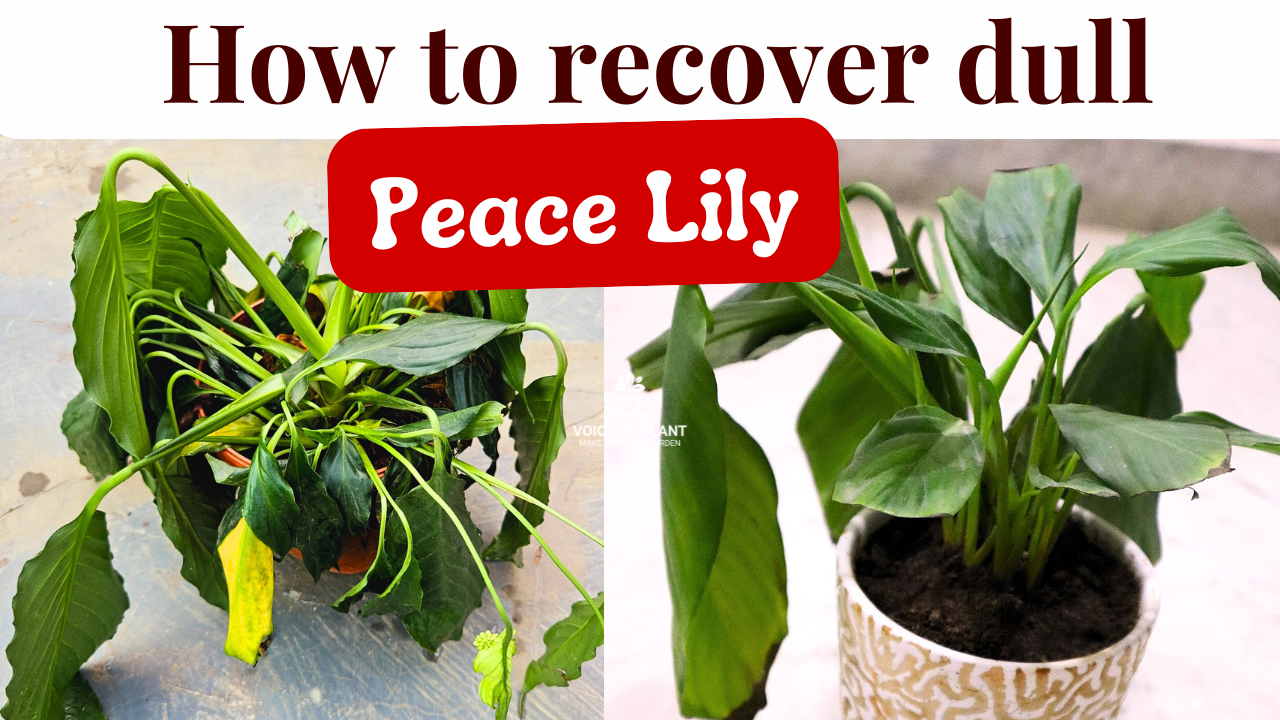Peace Lily Leaves Drooping
Peace lily is one of the most poplar indoor plant known for their glossy green leaves and striking white flowers. One common issue many plant lovers face with peace lilies is drooping or wilting leaves. If you notice your peace lily wilting, it’s important to identify the cause quickly to restore its health.
Below are five common reasons for peace lily leaves drooping and how to fix them.
Check 5 reasons for Peace lily leaves wilting
1. Inconsistent Watering (Overwatering or Underwatering)
One of the main reasons for peace lily drooping is improper watering. These plants enjoy moist soil, but not waterlogged conditions.
Overwatering can lead to soggy roots, yellowing leaves, and ultimately plant death. On the other hand, underwatering can cause the plant to wilt, and its leaves to turn crispy.
Solution:
Check the soil regularly.
- The top inch should always feel slightly moist but not soaked.
- Water when the soil starts to dry out, ensuring the excess water drains out of the pot.
- Avoid letting the plant sit in water.
Must read: Peace Lily Complete Care Guide
2. Exposure to Direct Sunlight
Peace lilies thrive in bright, indirect light. Exposure to too much direct sunlight can cause the leaves to droop and develop brown, crispy edges.
Solution:
Place your peace lily in a spot where it gets bright, filtered light, but not direct sunlight.
- A location near a window with sheer curtains works well.
- Too much light stresses the plant and leads to drooping.
Must read: Does Peace Lily Need Direct Sunlight
3. Using Poor Soil
Using poor-quality soil can lead to poor drainage and nutrient deficiencies, which are harmful to peace lilies.
When the soil does not drain well, it can result in waterlogged roots, causing the plant to suffocate. This often leads to yellowing leaves, wilting, and eventually root rot if not corrected.
- Additionally, soil lacking essential nutrients may fail to provide the plant with the sustenance it needs for healthy growth, resulting in weak, drooping leaves and slow development.
Solution:
- Use well-draining, nutrient-rich potting mix specifically designed for houseplants.
- Repot the peace lily if you suspect the soil quality is poor, and ensure the new pot has drainage holes to avoid water buildup.
4. Low Humidity Levels
Peace lilies are tropical plants that love humidity. If the surrounding air is too dry, their leaves may start to wilt or develop brown tips.
Solution:
- Increase humidity by misting the plant regularly or placing a humidifier nearby.
- Alternatively, you can place a tray filled with water and pebbles under the pot to increase moisture in the air around the plant.
5. Temperature Fluctuations
Peace lilies are sensitive to extreme temperature changes, whether from drafts or heating vents. Cold drafts or bursts of hot air can cause the leaves to droop and damage the plant.
Solution:
- Keep your peace lily in a stable environment, away from windows that let in cold drafts, air conditioning vents, or fireplaces.
- Maintain a consistent room temperature between 65°F and 80°F (18°C to 27°C) for optimal growth.
Conclusion
By addressing these common issues—irregular watering, too much sunlight, low humidity and temperature fluctuations —you can revive a drooping peace lily and maintain its lush, vibrant appearance. Proper care will ensure your plant continues to flower and bring beauty to your indoor space for months to come.
Follow our Social media channel:
1. Voice of Plant – YouTube Channel
2. Voice of Plant Facebook Page
3. Instagram Voice of Plant Channel
Happy gardening!
